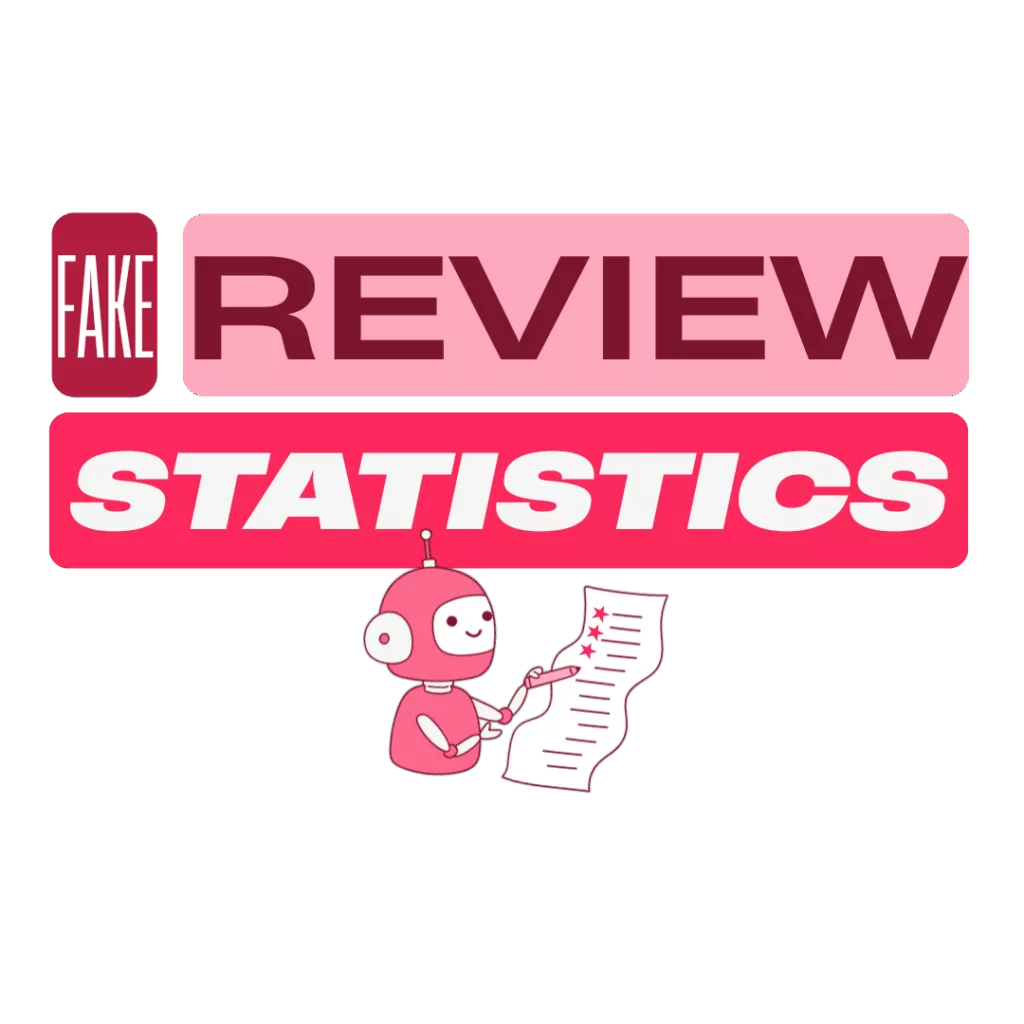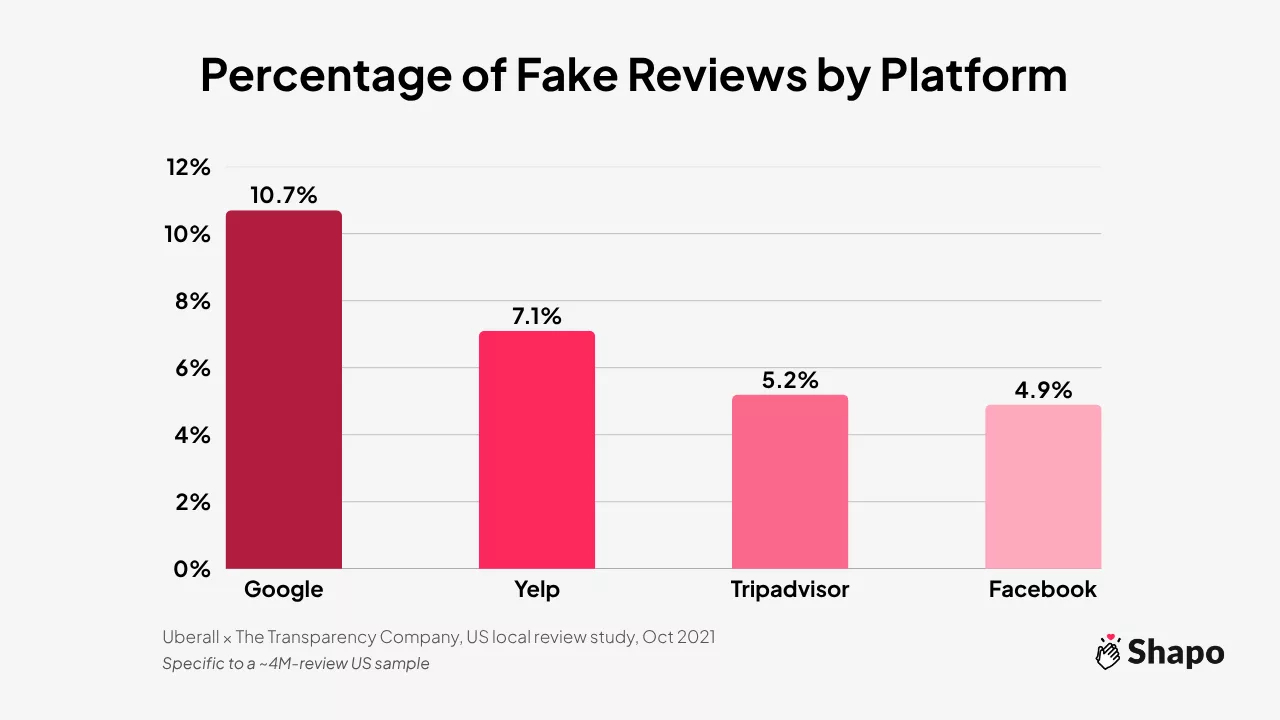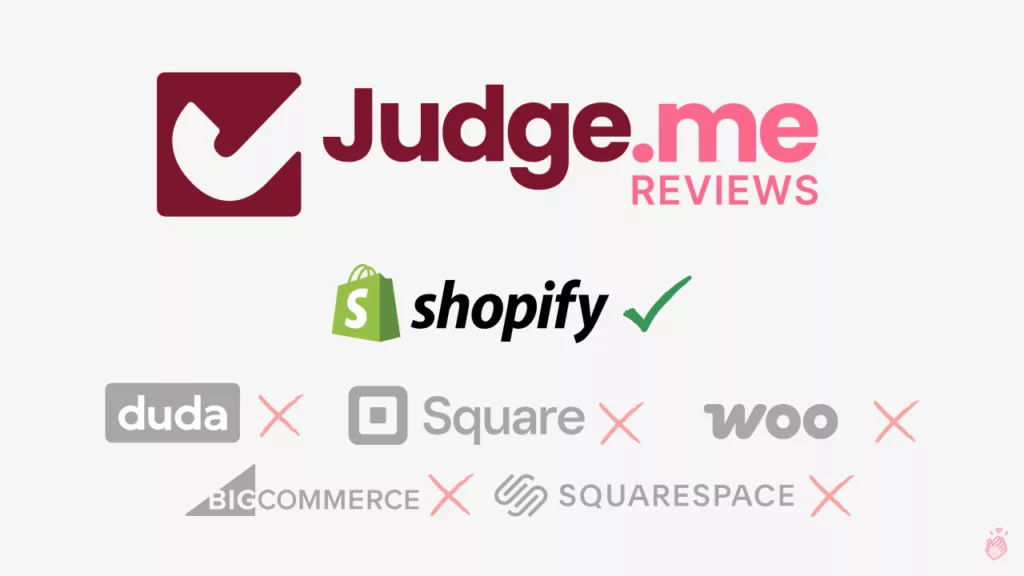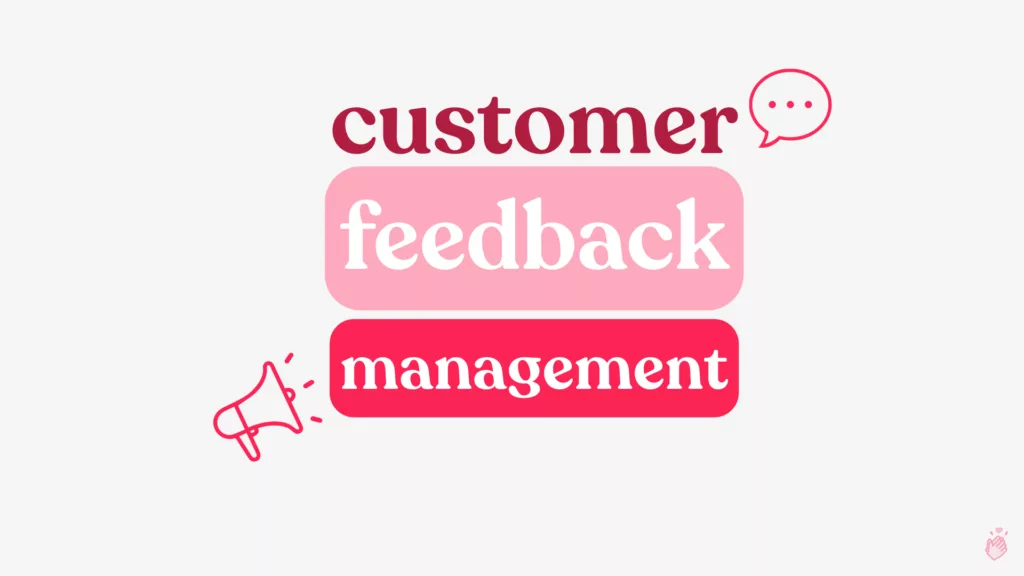
In the digital marketplace, trust is currency. Before we click “buy,” book a hotel, or choose a local service, we turn to the experiences of others. But what if that trust is built on a foundation of lies? Welcome to the pervasive and costly world of fake reviews.
Fake reviews are more than just a minor annoyance; they are a systemic problem that deceives consumers, harms honest businesses, and erodes the integrity of online commerce. The scale of this issue is staggering. Data for 2025 shows that roughly 30% of all online reviews are fake, and a shocking 82% of consumers encounter them annually.
The financial fallout is equally immense, with fake reviews projected to cost consumers an estimated $787 billion in 2025 due to misleading purchases.
This article dives deep into the latest fake review statistics. We’ll explore the prevalence of review fraud across major platforms, uncover its economic impact, examine the rise of AI-generated fakes, and provide actionable tips for both consumers and businesses to navigate this deceptive landscape.
Just How Pervasive Are Fake Reviews? The Numbers Don’t Lie
The problem of fake reviews has moved from a niche concern to a mainstream crisis. The data paints a clear picture of a digital ecosystem struggling with authenticity.
How Common are Fake Reviews?
- On average, a staggering 30% of online reviews are considered fake. This means nearly one in every three reviews you read could be intentionally misleading.
- Some analyses find that up to 47% of reviews on major websites are identified as suspicious, highlighting the challenge platforms face in moderation.
- The exposure is widespread, with 82% of consumers encountering fake reviews at least once in a 12-month period.
- This issue disproportionately affects younger consumers. A massive 92% of 18-34-year-olds saw fake reviews, compared with 59% of consumers aged 55 and older.
What are Consumer Attitudes and Suspicions on Fake Reviews
Consumers are increasingly aware and wary of review fraud.
- A significant 67% of consumers worry about the authenticity of reviews.
- This skepticism is widespread, as 85% of consumers suspect that reviews are fake “sometimes or often.”
- Interestingly, consumer confidence in spotting fakes is improving slightly. In 2025, 24% of consumers were confident they spotted a fake review, up from 19% in 2024. This could indicate either better consumer education or more effective platform moderation.
- The rise of artificial intelligence is a new source of suspicion. 46% of consumers would suspect a review is fake if it looks AI-generated, while 42% are suspicious of reviews that seem paid or incentivized.
Impact of Fake Reviews on Purchase Decisions
Suspicions about fake reviews directly translate into lost sales for businesses.
- Over half of consumers will not buy a product if they suspect it has fake reviews. This is a critical data point for any brand, showing that even a few suspicious reviews can cripple conversion rates.
- On the flip side, fake positive reviews can temporarily—and illegally—boost business. They can increase sales by 12.5% in the first two weeks, and a single fraudulent extra star can raise demand by 38%.
- Conversely, fake negative reviews used by competitors can be devastating, potentially cutting a business’s revenue by 25%.
Fake Review Stats by Platform

While no platform is immune, the prevalence of fake reviews varies. A 2025 study from the Transparency Company and Uberall provided the following estimates:
Platform Removal Efforts
The major platforms are investing heavily in combating this issue:
- Google: In 2023, Google blocked or removed 170 million policy-violating reviews, a 45% increase from the previous year. It also took down 12 million fake business profiles.
- Tripadvisor: The travel site blocked 2 million fake reviews in 2023, which accounted for 6.3% of all submissions and represented a 50% increase in removals from 2022.
- Trustpilot: In 2024, Trustpilot removed approximately 3.8 million fake reviews, about 6.1% of its total volume.
- Yelp: The local business platform removes an average of 5% of reviews and flags another 18% as suspicious for its users.
- Amazon: The e-commerce giant’s efforts show a complex picture. While some studies in 2020 suggested up to 47% of reviews were fake, Amazon reported that less than 20% of 19 million reviews it analyzed in 2024 were fake.
Category-Specific Insights
Fake reviews are more concentrated in certain industries. A Fakespot analysis found that 43% of Amazon’s bestselling products had unreliable reviews. The problem was especially severe for clothes, shoes, and jewelry (88% unreliable reviews) and electronics (53%).
Local businesses are also a major target. The Transparency Company highlighted high fake-review rates for locksmiths (14.5%) and in specific regions like Miami-Ft. Lauderdale (9.7%).
The Economic Impact of Fake Reviews

The cost of fake reviews extends far beyond a single bad purchase. It represents a massive drain on the economy and a significant financial burden on households.
Cost of Fake Reviews to Consumers
- Capital One Shopping estimates that fake reviews cost consumers $0.12 on every dollar spent, leading to a total loss of $787.7 billion from unwanted purchases in 2025. This figure is projected to surge to $1.1 trillion by 2030.
- On an individual level, the average consumer wastes about $125 per year on products they purchased based on deceptive reviews.
- The harm is even greater for high-stakes services. The Transparency Company calculated that review fraud causes approximately $300 billion in annual consumer harm for services like home repair, legal, and medical, costing the average U.S. household $2,385 per year.
Return on Investment for Fraudsters
The incentive for businesses to engage in this illicit practice is alarmingly high. The U.S. Federal Trade Commission (FTC) estimates that businesses buying fake reviews can see a staggering 1,900% return on their investment, explaining why the fraudulent practice persists despite the risks.
AI-Generated Reviews Statistics
The rapid advancement of generative AI has opened a new and challenging front in the war on fake reviews. AI can produce human-like, seemingly authentic reviews at an unprecedented scale, making detection more difficult than ever.

- The Transparency Company observed that AI-generated reviews have been growing 80% month-over-month since June 2023.
- A report from Originality.ai found that 23.7% of Zillow agent reviews in 2025 were likely AI-generated, a massive jump from just 3.63% in 2019.
- DoubleVerify noted a three-fold increase in apps with AI-powered fake reviews in 2024 compared to 2023 and even identified a streaming app where 50% of the reviews were fake.
How Regulators and Platforms are Taking Action against Fake Reviews
The growing crisis has prompted a response from both government bodies and the tech industry itself.
FTC Enforcement
The U.S. Federal Trade Commission (FTC) is taking a more aggressive stance against review fraud.
- In October 2021, the FTC sent notices to over 700 businesses, warning that using fake reviews could lead to civil penalties of up to $43,792 per violation.
- Proposed FTC rules would go even further, aiming to ban the buying or selling of fake reviews, prohibit undisclosed AI-generated testimonials, and hold platforms responsible for policing their content.
Industry Coalitions and Policy Changes
Recognizing that this is a shared problem, major platforms are beginning to collaborate. In 2023, industry giants including Amazon, Booking.com, Expedia, Glassdoor, Google, Tripadvisor, and Trustpilot formed the “Coalition for Trusted Reviews” to share best practices and develop new strategies for fighting fake reviews.
How to Spot Fake Reviews
As a consumer, you are the last line of defense. Here are some tips to help you identify fraudulent reviews and make more informed decisions.
Red Flags to Watch For
- Generic or Overly Positive Language: Look out for reviews that are high on praise but low on specific details. Authentic reviews often mention both pros and cons.
- Repetitive Wording: If you see identical phrases or sentences across multiple reviews, it could be a sign of a copy-paste job, often seen in AI-generated fakes.
- Extreme Ratings: A flood of five-star (or one-star) reviews with no substantive comments is highly suspicious.
- Suspicious Reviewer Profiles: Click on the reviewer’s name. If their name looks fake, they are anonymous, or they have only ever posted one review on that platform, be skeptical.
- Listen for the Robot: Watch for language typical of AI chatbots, such as the infamous phrase, “As an AI language model…”.
Use Tools and Best Practices
- Check Multiple Platforms: Don’t rely on a single source. A shocking 67% of consumers only check one or two sites before choosing a business. Cross-reference reviews on Google, Yelp, and industry-specific sites.
- Look for “Verified Buyer” Badges: Many platforms label reviews from customers who have verifiably purchased the product. Prioritize these.
- Check the Reviewer’s History: A trustworthy reviewer often has a history of balanced reviews for different products and businesses.
Protecting Your Brand: A Proactive Guide for Businesses
For honest business owners, fake reviews—both positive ones on competitor sites and negative ones on your own—are a major threat. Here’s how to protect your brand’s reputation.
- Encourage Authentic Feedback: Actively ask your real customers for reviews. Make the process easy by sending a follow-up email with a direct link to your preferred review platform.
- Respond to Every Review: Responding to both good and bad reviews builds trust and shows you are engaged. Data shows that responding to at least 25% of reviews can increase earnings by 35%.
- Monitor and Report: Regularly monitor your profiles on major review platforms. Report any suspicious activity or reviews that violate platform policies immediately.
- Avoid Incentives: Never offer money, discounts, or free products in exchange for reviews. As we’ve seen, 42% of consumers are already suspicious of paid reviews, and it can land your business in hot water with the FTC.
Navigating the Future of Online Reviews
The 2025 fake review statistics confirm that we are in the midst of a digital trust crisis. Fake reviews are a pervasive, costly, and rapidly evolving problem, with AI-generated content adding a new layer of complexity. They cheat consumers out of hundreds of billions of dollars and unfairly punish honest businesses.
While platforms and regulators are stepping up their efforts, the ultimate power lies with a vigilant public and principled business owners. By learning to spot red flags, championing authenticity, and leveraging emerging tools like Shapo to verify reviews, we can collectively work to restore trust in the digital word-of-mouth that has become so central to our economy.




